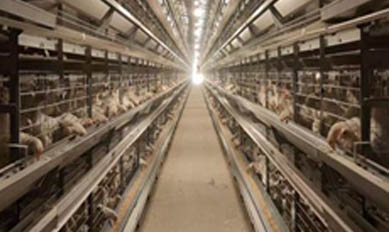The Benefits of Embracing Cage-Free Poultry Farming for a Sustainable Future
8 月 . 08, 2024 04:26 Back to list
The Benefits of Embracing Cage-Free Poultry Farming for a Sustainable Future
Cage-Free Poultry A Step Toward Compassionate Farming
In recent years, the movement towards cage-free poultry farming has gained significant momentum, driven by growing consumer awareness of animal welfare issues. Cage-free systems provide a more humane alternative to conventional battery farming methods, where hens are confined to small cages, severely restricting their natural behaviors. By allowing poultry to roam freely in open spaces, cage-free production not only enhances the quality of life for these animals but also positively impacts the overall sustainability of the poultry industry.
Understanding Cage-Free Poultry
Cage-free poultry refers to chickens that are raised in environments where they are not confined to cages. Instead, they are allowed to roam in a barn or a designated outdoor area. This freedom enables hens to engage in natural behaviors such as nesting, perching, and foraging, which are crucial for their physical and psychological well-being. Research has shown that poultry housed in cage-free systems tend to exhibit lower stress levels and better health compared to their caged counterparts. Furthermore, cage-free operations typically provide more space per bird, reducing competition and aggression among hens.
Consumer Demand and Market Trends
The growing demand for cage-free poultry products is a response to increased consumer awareness about the conditions in which animals are raised. Many individuals today prioritize ethical considerations when choosing food products, seeking out options that align with their values. This shift in consumer behavior has prompted several large food corporations and retailers to commit to phasing out cage-based systems. Major brands like McDonald's, Nestlé, and Walmart have initiated plans to transition entirely to cage-free eggs in the coming years, reflecting a significant cultural shift towards more ethical sourcing practices.
cage free poultry

Environmental Impact
Beyond animal welfare, cage-free poultry farming can also promote environmental sustainability. Conventional poultry operations often rely on intensive farming methods that contribute to land degradation, water pollution, and greenhouse gas emissions. Cage-free farming practices, when implemented with sustainability in mind, can lead to reduced environmental footprints. By encouraging rotation grazing and sustainable feed practices, these systems help support healthier ecosystems and promote biodiversity.
Challenges and Considerations
Despite its benefits, the transition to cage-free poultry farming is not without challenges. Farmers may face higher costs associated with the implementation of cage-free systems, including increased land requirements, feed costs, and barn modifications. There can also be production challenges, as mortality rates in cage-free systems may be higher due to increased exposure to diseases and predation. It is crucial, therefore, for farmers to receive adequate support and resources to transition successfully and implement the necessary welfare standards.
Conclusion
Cage-free poultry farming represents a significant step towards more ethical and sustainable agricultural practices. The movement is driven by consumer demand for transparency and humane treatment of animals, and it remains crucial for consumers and producers alike to collaborate in this endeavor. By embracing cage-free systems, not only do we improve the lives of poultry, but we also contribute to a more compassionate and sustainable food system for future generations. The journey towards fully cage-free production is ongoing, but each commitment to humane farming practices brings us closer to a world where animals are treated with the dignity they deserve.
-
Battery Layer Cage Systems With Automatic Feeding Machine
NewsMar.07,2025
-
Hot Selling Multi Function Vacuum Packaging Machine
NewsMar.07,2025
-
Chicken scalder plucker machine for sale poultry scalder chicken plucking machine
NewsMar.07,2025
-
Egg Tray Making Machine 1000, 2000, pulp molding machine
NewsMar.07,2025
-
Automatic Feeding Line System Pan Feeder Nipple Drinker
NewsMar.07,2025
-
cage layer chicken
NewsMar.07,2025






